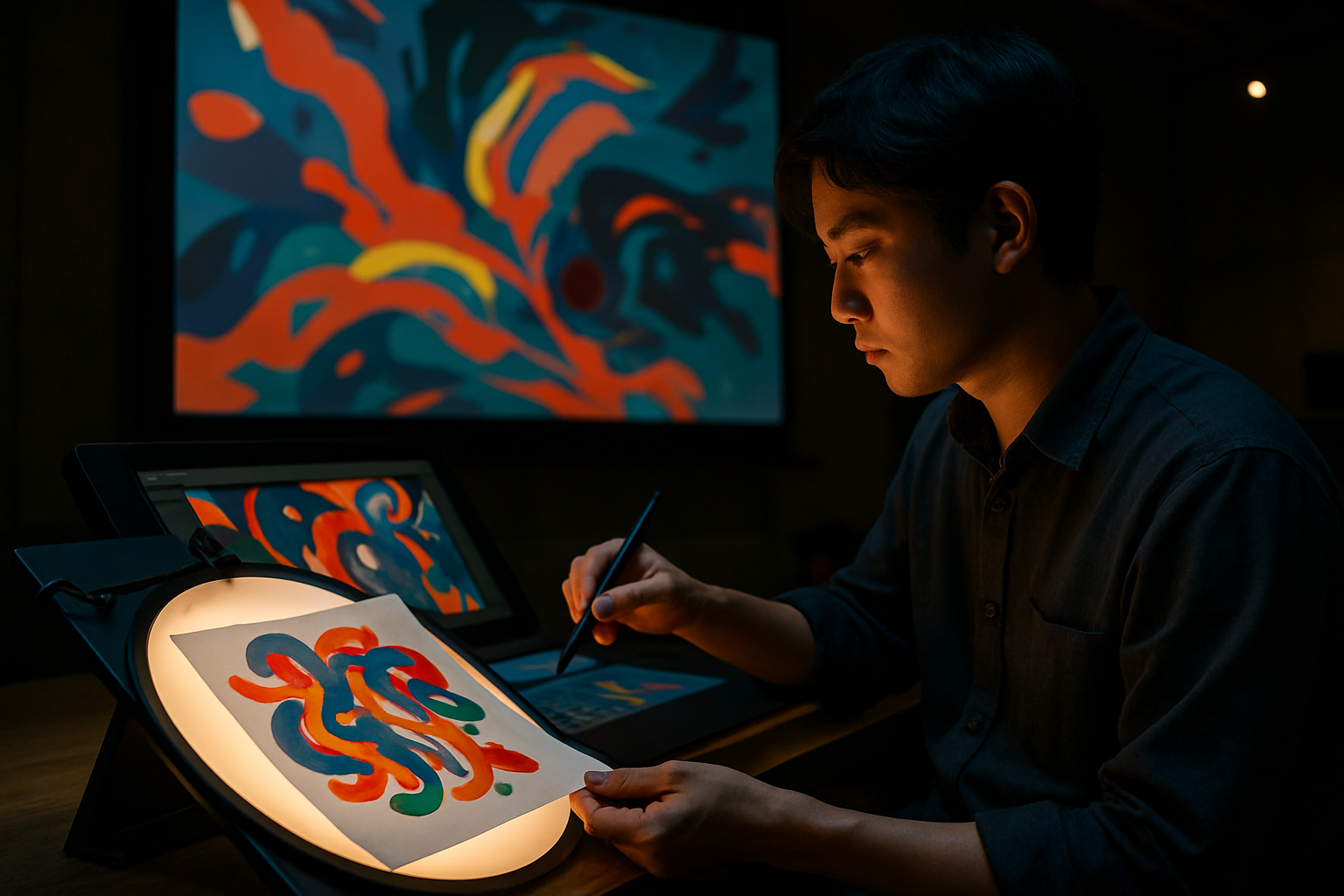Beyond Blockbusters: Japan's Experimental Animation Renaissance
In an era dominated by CGI spectacles and franchise sequels, Japan's experimental animation scene has quietly flourished, pushing boundaries far beyond conventional storytelling. This movement, though less commercially visible than Studio Ghibli or mainstream anime, represents one of the most innovative artistic frontiers in contemporary visual culture. Artists working in this space blend traditional techniques with cutting-edge technology, creating works that challenge perception and redefine animation's possibilities. Their creations—abstract, surreal, and often deeply philosophical—offer glimpses into animation's future while honoring its rich historical foundations. The international art world has increasingly embraced these works, recognizing their significance not just as entertainment but as legitimate fine art deserving serious critical consideration.

The Hidden History of Japanese Experimental Animation
Japanese experimental animation traces its roots back to the 1960s, when pioneering artists like Kuri Yoji and Tezuka Osamu began exploring animation beyond commercial constraints. Unlike their mainstream counterparts, these early experimentalists approached animation as a pure art form rather than mere entertainment. Working with limited resources but unlimited imagination, they created abstract visual poems that challenged viewers’ expectations and perceptions. Their techniques—scratch animation, painting directly on film, and primitive stop-motion—established a foundation for generations to follow.
The 1980s saw this movement gain momentum through the work of artists like Kawamoto Kihachirō and Yamamura Kōji, who blended traditional Japanese aesthetics with surrealist influences. During this period, experimental animation existed primarily in university settings and underground art circles, rarely reaching mainstream audiences. Nevertheless, these works profoundly influenced anime’s visual language, with their innovations gradually filtering into commercial productions. This cross-pollination between experimental and commercial animation remains a distinctive feature of Japanese visual culture, creating a uniquely fertile creative ecosystem unlike anywhere else in the world.
Contemporary Pioneers Redefining the Medium
Today’s Japanese experimental animators work at the intersection of traditional craftsmanship and digital innovation. Artists like Tabaimo combine ukiyo-e aesthetics with video installation art, creating immersive environments that comment on contemporary Japanese society. Meanwhile, Mirai Mizue produces hypnotic abstract animations featuring thousands of hand-drawn geometric patterns that evolve like visual music. His works, requiring months of painstaking frame-by-frame creation, represent animation in its purest form—movement as visual poetry rather than narrative vehicle.
The internationally acclaimed Yamamoto Atsushi has garnered attention for his haunting stop-motion works that explore themes of memory and decay. Using traditional puppetry techniques enhanced by digital post-production, his films create dreamlike atmospheres that linger in viewers’ minds long after watching. Another significant figure, Mizushiri Yoriko, creates sensual animations exploring tactile experiences and bodily sensations through minimalist, fluid line work. These artists share a commitment to animation as a deeply personal expression rather than commercial product, often spending years on projects that may run just a few minutes in length.
Technical Innovation Through Artistic Necessity
The experimental animation scene has flourished partly through necessity-driven innovation. Working with minimal budgets compared to commercial studios, artists have developed ingenious techniques to achieve their visions. Many combine analog and digital methods, creating hybrid approaches unique to their practice. Rotoscoping, pixilation, paint-on-glass, and sand animation are all techniques finding new expression in this community. Some artists have even developed custom software tools and unique production methods that become signatures of their artistic voice.
The Tokyo University of the Arts has become an epicenter for technical experimentation, with its animation department fostering unconventional approaches. Its annual graduate showcases frequently reveal astonishing new techniques that push animation’s boundaries. Similarly, independent animation festivals like Image Forum provide crucial platforms for technical exchange between artists. This environment of shared knowledge and collaborative problem-solving has accelerated technical innovation, creating a distinctive ecosystem where artistic necessity drives technological advancement rather than the reverse.
From Festival Circuits to Global Recognition
For decades, Japanese experimental animation existed primarily within specialized festival circuits and art institutions. Films would premiere at events like the Hiroshima International Animation Festival or the Image Forum Festival before traveling to international showcases like Annecy or Ottawa. This limited distribution meant most works remained unknown to mainstream audiences despite their artistic significance. However, the digital revolution has dramatically altered this landscape, creating unprecedented opportunities for these artists to reach global viewers.
Streaming platforms dedicated to art cinema, museum retrospectives, and social media have all contributed to wider recognition of this movement. Major museums including the Museum of Modern Art in New York and Centre Pompidou in Paris have hosted exhibitions dedicated to Japanese experimental animation. Meanwhile, younger artists have embraced Instagram and Vimeo as distribution channels, finding enthusiastic international audiences online. This growing visibility has attracted commercial interest as well—fashion brands, music videos, and advertising agencies increasingly commission work from experimental animators, creating new financial sustainability for artists while introducing their aesthetic to broader audiences.
Cultural Context and Future Trajectories
Japanese experimental animation reflects broader cultural currents within contemporary Japan. Many works engage with tensions between tradition and modernity, addressing themes of technological alienation, environmental concern, and shifting social structures. Others explore distinctly Japanese concepts like mono no aware (the pathos of things) and wabi-sabi (the beauty of imperfection and impermanence). These philosophical underpinnings give the movement a cultural depth that resonates with international audiences seeking alternatives to mainstream animation’s typically literal storytelling.
Looking forward, Japanese experimental animation stands at a fascinating crossroads. As technology democratizes animation tools, more artists are entering the field with diverse backgrounds and perspectives. Artificial intelligence and machine learning offer new creative possibilities, with some artists already incorporating algorithmic elements into traditionally hand-crafted works. Virtual reality presents perhaps the most revolutionary frontier, with pioneers like Sato Masahiko creating immersive animated environments that completely reimagine viewer-artwork relationships. Rather than diluting the movement’s distinctive character, these technological developments seem to be enriching it, creating new hybrid forms that honor traditional craftsmanship while embracing the future’s possibilities.





